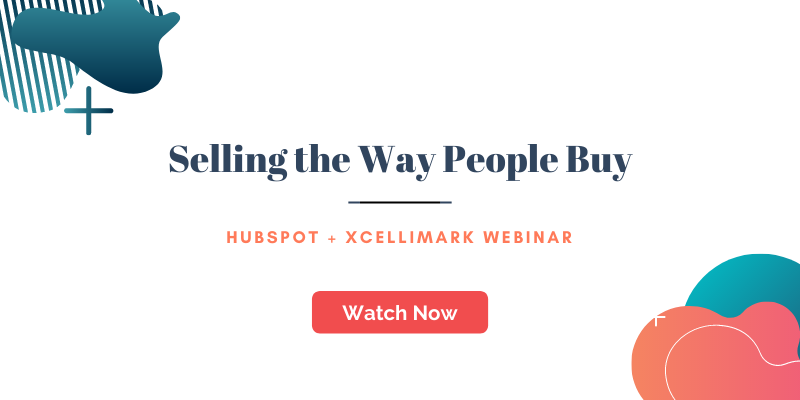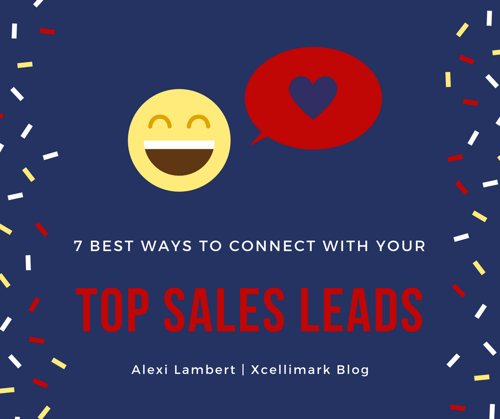How to Sell the Way People Buy with Inbound Sales

 I know I have said this so many times before, but it’s worth repeating again in light of this article - your sales team no longer controls the buying process. Your buyer controls the sales process. It’s not so fun when you’re on the sales side. But for the buyer, this new power rocks!
I know I have said this so many times before, but it’s worth repeating again in light of this article - your sales team no longer controls the buying process. Your buyer controls the sales process. It’s not so fun when you’re on the sales side. But for the buyer, this new power rocks!
Traditional cold calling is on life support and its prognosis is grim. Even if you are very successful in sales, you know that it is getting harder and harder to consistently connect with your prospects in a meaningful way.
Throw in the ever-changing sales technology landscape, and the sales process is becoming ever more challenging.
While a new sales “normal” is evolving before our eyes, some salespeople are struggling to know exactly how “sales” is actually working right now and how it will work in the future.
It’s becoming clear, though, that it’s time to shift your selling approach to the way people buy.
This is called the Inbound Sales methodology.
What is Inbound Sales?
In a nutshell, Inbound Sales is a personalized, modern sales method of helping prospective buyers first by understanding their challenges, problems, goals, and desires in order to guide them through their buyer’s journey (or decision-making process). So, instead of going for the sale upfront, be a trusted consultant and help them in their journey.
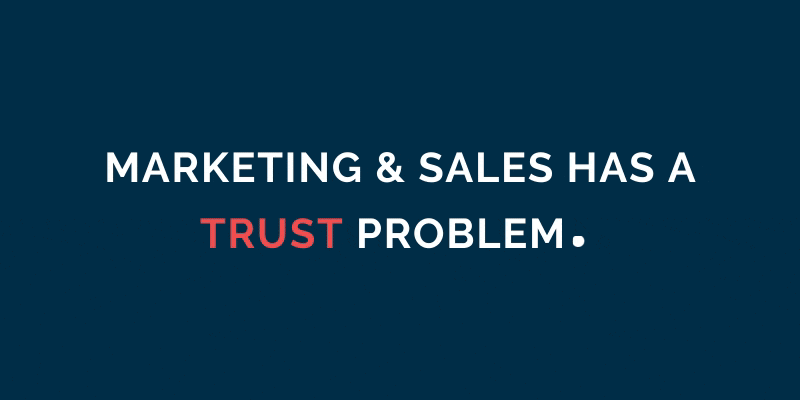
The Fact is, Marketing and Sales Have a Trust Problem
I have recently had to engage in the process of buying another car to replace my 2006 Nissan Pathfinder, which proudly boasts over 257,000 miles. (I was shooting for 300,000, but I don’t think she is going to make it.) Of course, I started my research online because that’s what we all do, right?
I have spent days so far researching the type of vehicle I want, reading comparison guides, downloading brochures, and talking to some key influencers, such as my wife (Ok, she’s actually the decision-maker, but I digress).
I narrowed it down to THE vehicle, but I had never driven one. My excitement to go drive one, though, was quickly overpowered by the dread of walking into a dealership and encountering a car salesperson. The pressure!
I entered the dealership with an innate mistrust – not really sure if I would get a good deal. They, in turn, tried their hardest to not let me leave until I succumbed to the sale. It was dreadful.
The salesperson was actually a really nice guy. I liked him, but I disliked the process completely. After the third or fourth time (I lost track) that the salesperson went to “talk to his manager,” even to let me just leave the dealership, my mistrust of the process was verified.
I don’t blame the sales guy. He’s trying to make a living. And he really was nice. But the process was not an experience that I want to repeat.
Of course, it’s not just car salespeople, so I don’t mean to single them out. Marketers and salespeople in general have a trust issue today with buyers. Check out the chart below if you don’t believe me. (The poor car sales guy is second to last down there. Sorry buddy.)
It’s the process, not the people, that are making it bad.
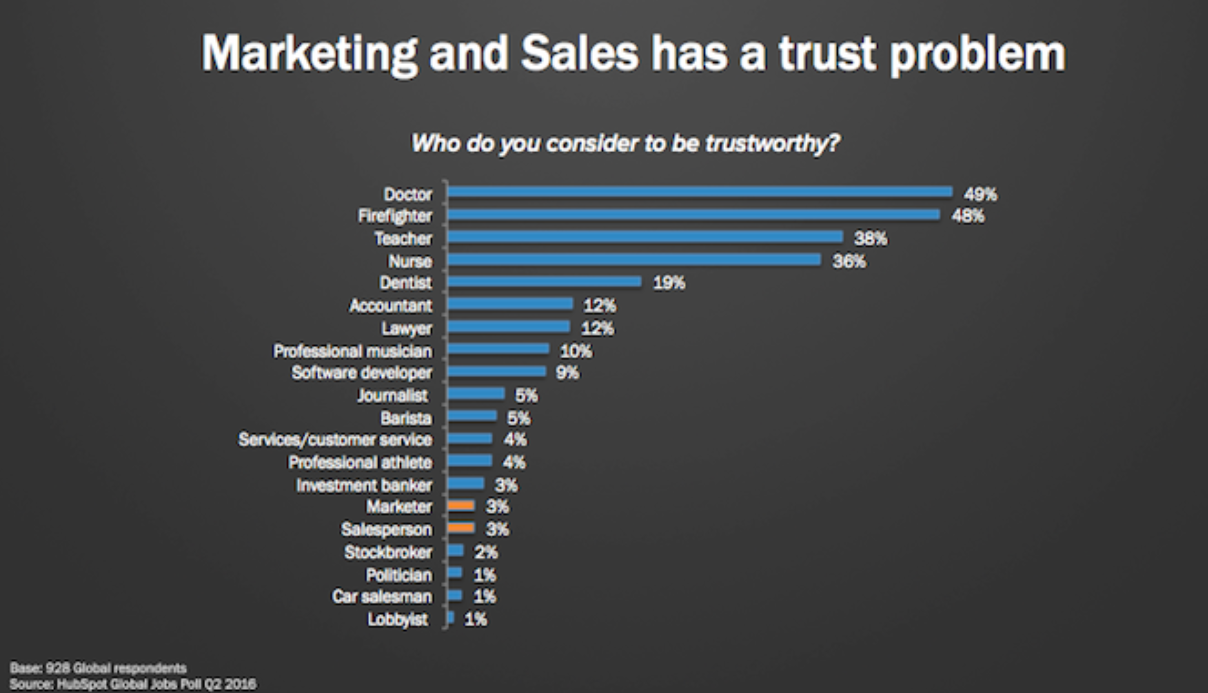
Many people instinctively do not trust strangers. (Remember being taught Stranger Danger as a kid?) The problem is, salespeople tend to quickly jump into their sales pitch without digging deep into what the buyer’s needs are, and then patiently listening while trying to determine the best way to help.
Instead, many salespeople come across as just wanting the sale and wanting it now. I know that is how most salespeople get paid, but it’s not the way to make a sale today.
Salespeople need to adapt to the modern era of how people buy.
Some Things Never Change
Salespeople are struggling to keep up with the ever-changing buying habits of their customers while finding ways to solve the same old problems. The sales challenges have always been, and still are:
- Grabbing the attention of prospects
- Standing out from the crowd
- Creating a pipeline of qualified leads
- Competing against lower cost options
- Staying top of mind as buyers consider their options
- Building a case for change
- Retaining customers
- Staying motivated
- Feel free to insert your own list at this point
The Internet, and the wealth of information it provides, has changed sales forever.
But the motivations to buy something haven’t changed. The primary motives that trigger people to buy something are typically when something hurts (i.e. pains or challenges), or when they feel a product or service will make them feel good by reaching a goal or achieving an objective. People are also motivated to buy based on their emotions, logic, or impacts from what other people do.

Modern Day Selling
In today’s world, you need to evolve your sales process to become more helpful and less salesy. Be a valuable resource to help the buyer through his or her buyer’s journey. Help first, sell second.
Your buyers don’t want to be prospected and closed. They want to be educated, supported, and guided through their buying process to understand the best solution that will overcome their challenges or achieve their goal.
Your job is to help them along this journey.
So, what do you get when “sales” becomes “help?” You get S(Help) or the process of selling the way people want to buy. Shelp – your new word of the day!
Building a New Sales Process for Today’s Buyers
Most companies, marketers, and salespeople are realizing they need to update their marketing and sales process to match how people make their buying decisions.
So, let’s first agree that marketing and sales are no longer separate teams who point fingers at each other and blame each other for lack of sales. Your marketing and sales processes and teams need to be integrated and symbiotic.
That means that marketing needs to educate your prospects and sales needs to have insights of what each prospect has read, been exposed to, and has interest in, which can be tracked with a system such as HubSpot.
To be most effective, both marketing and sales need to understand the buyer’s journey that your prospect has already completed and where they are in that journey at the moment they are ready to talk to you. It should be well documented so marketing will understand what is working and not working on their end, and sales understands what else the buyer needs at this point in their journey to make the right decision.
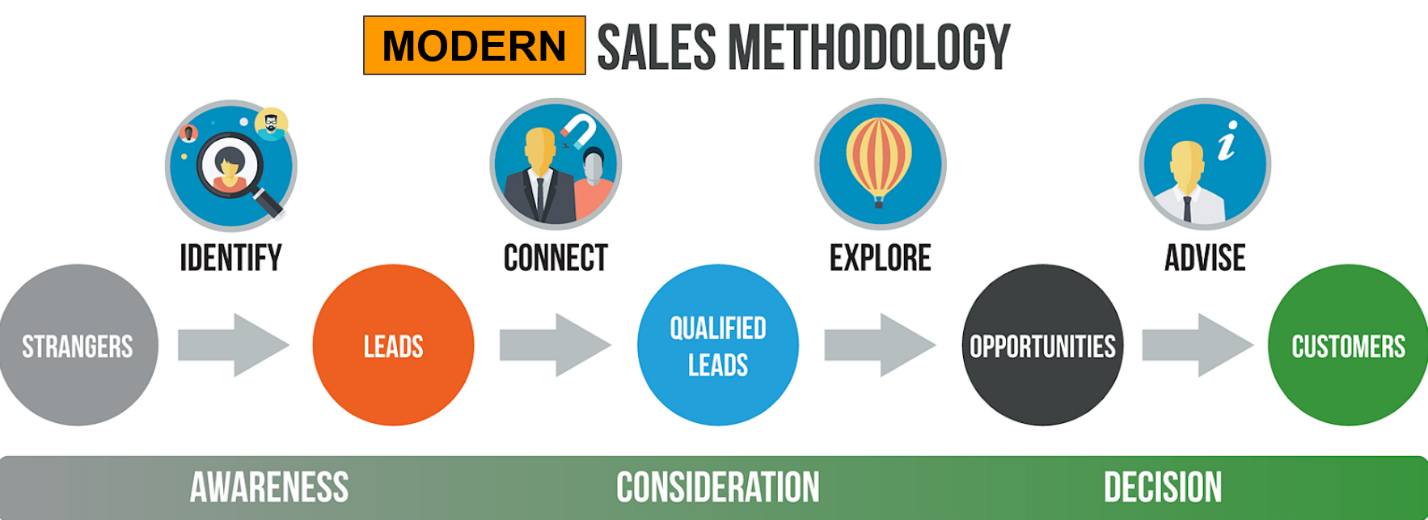
The Buyers’ Journey
Let’s make sure we fully understand the buyer’s journey. The buyer’s journey has three (3) stages:
- Awareness - where the prospect experiences a trigger event or moment in which they identify a problem or challenge they want to solve or a goal they want to achieve.
- Consideration - where they go through the process of researching and educating themselves on how they can overcome their challenge and achieve their goal.
- Decision - where they have evaluated their options and are ready to trial or purchase the solution that they feel will overcome their challenge or achieve their goal.
The Inbound Marketing and Sales Methodology
There are different lifecycle stages that buyers go through during their buyer’s journey.
These stages include:
- Strangers who become aware of your brand, company, product, or service and express an interest in learning more about you.
- Leads who identify themselves to you by sharing personal information (i.e. name, email address, etc.) during their education process by downloading a content offer (guide, eBook, white paper, list, case study, etc.) or signing up for something like your newsletter, webinar, or podcast.
- Qualified Leads continue to engage with your content, becoming even more qualified as either a marketing qualified lead (MQL) or a sales qualified lead (SQL).
- Sales Opportunity is where an SQL directly engages with your sales team and they are presented a proposal, trial offer, or consultation. These are typically associated with Deals that represent a financial opportunity for your company.
- Customers are your sales opportunity contacts that become a paying customer after a closed deal. Customers that are delighted with your company, product, and services can become an Evangelist, advocating and recommending your organization.
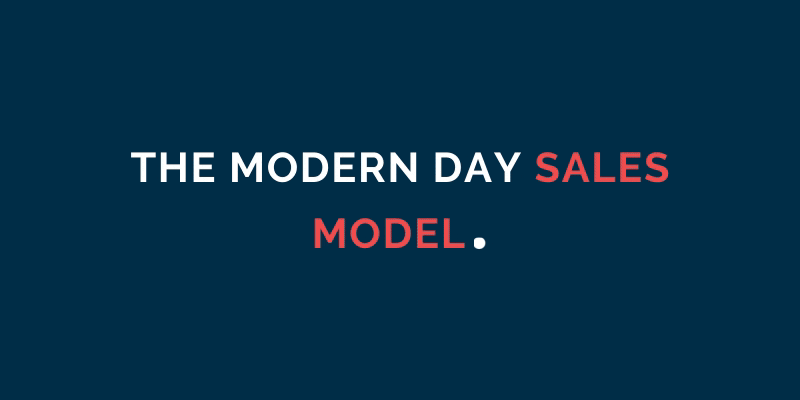
The Modern-Day Sales Model
The Inbound Sales Methodology includes four (4) core actions that make up the modern-day sales model.
- Identify the people who have entered the awareness stage of their buyer’s journey. (For example, my car that’s been a part of the family for 14 years died, so I am remorsefully researching a replacement.) These are people who have self-identified that they have a problem they are trying to solve and are actively searching for a solution. This assumes that you have already developed, documented, shared, and socialized a buyer profile (buyer persona) that is best suited for your product or service. It also assumes that you have developed an approach to contact the potential buyer that includes a sequence of steps to engage and qualify them.
- Connect involves how to best engage both active and not so active buyers. This is where the connect call comes in and your role as a helper. You need to find ways to give before you get. Your existing buyers can become a goldmine at this point. They can arm you with the questions your strangers and leads are seeking answers to since they have successfully gone through this journey with you already. This can be very helpful as you prepare for your connect call and how you should conduct that call.
- Explore your buyer’s goals and challenges. Your exploratory call is likely the most important part of your sales process. It is where rapport and trust with your potential buyer is built. It is where your prospect will begin feeling slightly uncomfortable, which you can resolve as you work with them to build the solution to their challenges or goals. This is an area where many trained salespeople will employ a sales method like BANT (budget, authority, need, and timeline). While this information is important, it is not enough to drive a sale forward. It is critical that you understand the exploratory call questions and next steps after the call.
- Advise a buyer on whether or not your solution addresses their needs. You might be asking yourself at this point “What? Aren’t I supposed to be asking for the sale right now?” You may be talking to one person at this point. According to research, if your sales opportunity is in a B2B buying process, there are likely up to five (5) people involved in this purchase decision. There are some key things you need to know that can lead to the soft close. The purpose of the soft close is to further establish the sales opportunity’s commitment to move forward with you and to ensure you have not missed any steps in the qualifying process. It’s also designed to ensure you don’t waste your time putting together a contract, presentation, demo, proposal, or a price quote that will ultimately get shuffled away under a pile of other emails or paperwork.
If you have moved through this proven modern sales process, then you have set yourself up for greater likelihood of success as you negotiate and close the deal.
But you may be asking how to update your sales process in your own company. We’re here to help you.
Learn more about our Free webinar on “Selling the Way People Buy.”

